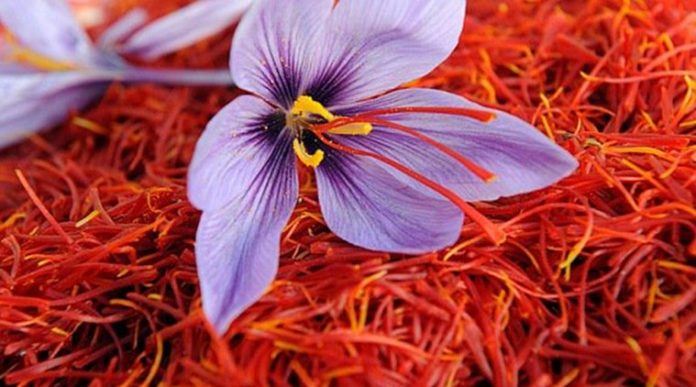-By Mubashir Bukhari
Srinagar (NVI): The saffron production in Kashmir increased to 4.07 kilogram per hectare in 2019 as compared to around past two years, when the crop suffered damage due to unfavourable climate conditions.
As per the figures compiled by Kashmir Agriculture department, the saffron production witnessed a decline of nearly 20 per cent in 2018-19.
But in 2019-2020, its production increased, for which the government gives credit to the favourable weather conditions and advanced farming practices adopted by the growers.
In 2017-18, the production of saffron couldn’t cross even 2.0 kg per hectare. In 2016, saffron production was at 4.42 kg per hectare.
Director, Agriculture Department Kashmir, Altaf Aijaz Andrabi said they are on a mission to increase the saffron yield to 7.5 kg per hectare from 4.07 kg per hectare, in the next three years.
Andrabi said, “The department has motivated growers to change their farming practices in order to increase production by three kg per hectare.”
“Farmers have agreed to adopt scientific methods. The department in coordination with farmers is on a mission to increase the production,” Andrabi said.
He said the advanced prophylactic (prevention of diseases) and soil health reclamation measures are being included in the farming this year.
“These measures will prove to be a game-changer in the saffron cultivation. Furthermore, using machines in saffron fields has brought down labour cost. The department also distributed mechanized weeders to the growers. Sprinkler system of irrigation is also being installed on priority,” Altaf added.
The government has also decided to rejig marketing strategy to promote Kashmiri saffron in the international markets. “We are waiting for the inauguration of the spice park. It will serve as a one-stop-shop for saffron export to various countries,” Andrabi said.
Saffron, which is cultivated mainly in four districts of Jammu and Kashmir — Pulwama, Budgam, Srinagar and Kishtwar — is in great demand for its medicinal, cosmetic and aromatic properties. The blossoms appear during mid-October to early November.
Near about 32,000 farmers are directly associated with saffron production in Kashmir.
Bilal Ahmad, a saffron grower from south Kashmir said that lack of facilities has discouraged farmers to the extent that they are gradually giving up its cultivation.
“New generation is least interested in saffron cultivation. We hope department will take measures to give a fillip to the saffron cultivation,” he said.
To revive the traditional saffron cultivation in the Valley, the then government had also launched National Saffron Mission in 2010.
The project was aimed at improving the saffron production by providing quality seeds and uninterrupted water supply.
The Centre had initially sanctioned Rs 371.18 crore to help generate a good yield and prevent its decline. Under the scheme, every farmer was promised a sum of Rs 25,000 for each Kanal (unit) and would be encouraged to adopt new technologies like seed diversification and transformation.
Recently, Prime Minister Narendra Modi-led BJP government said that they are working on a mission mode to double the production of saffron in Kashmir.








